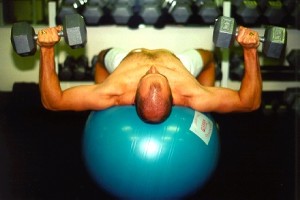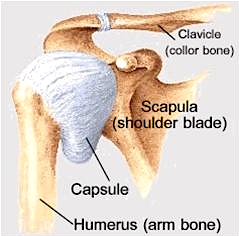Happy Friday!
I hope you are all excited about the weekend!
Natalia Mammadova In The News
Some of you may remember that I was working with Natalia Mammadova (one of the top volleyball players in both Russia, and the world) last summer to help her with a chronic shoulder injury, and to get her in shape for the season.
Our rehabilitation was halted one week into our three-week program due to two family emergencies occurring back to back. Natalia and her trainer (Boris) had to rush to New York city for the remainder of our scheduled time together.
I squeezed them in for a few days when they got back, but sadly, we had to see Natalia off with only about 1/3rd of our actual work completed.
Boris recently sent me a link to a news article highlighting that Natalia is still performing very well. She’s had some chronic shoulder pain, but has successfully managed to work with it thus far.
I’m very proud of her ability to endure this season after such a stressful interruption to her much needed rehabilitation and conditioning.
That’s the stuff of champions; great job Natalia!
You can read the article here: https://www.cev.lu/Competition-Area/CompetitionNews.aspx?NewsID=16537&ID=678
Tips For Rehabilitating a Common Shoulder Injury
Bench pressing mistakes result in more injuries in the gym than any other exercise in my opinion.
I have rehabilitated countless shoulder injuries from poor weight lifting technique in my career.
The most common shoulder injury from bench pressing is an injury to the anterior capsule of the joint. Though the bench press exercise is risky for those without adequate knowledge of functional anatomy, it is also made more risky by the fact that several other common shoulder/chest development exercises stress the same tissues of the shoulder.
Any exercise that loads the shoulder/arm in end range abduction (away from the midline), horizontal abduction (as in reaching into the back seat of a car from the front seat), or extension (arm swinging back) loads the anterior capsule of the shoulder joint.
Because this movement pattern is common to exercises such as the bench press, dips, and peck flys, many exercises load it excessively many times in one workout.
Once the capsule is stretched, it can no longer stabilize the shoulder joint. The progressive instability causes inflammation, compensation patterns of muscle recruitment, altered biomechanics, pain, and usually causes compensation in other areas of the body.
As the shoulder is progressively less stable from repeatedly being traumatized and inflamed, the glenoid labrum (special tissue for stabilizing the shoulder in the socket) becomes stressed. Soon enough, a crack or tear in the labrum results…
Most males do not have the flexibility in their shoulders to safely lower the bar to their chest without traumatizing the anterior capsule of their shoulder.
Here you can see me demonstrating how to asses the flexibility of the anterior shoulder capsule in the bench press position; FYI: this is one of MANY tests and techniques I share in my DVD Correspondence course titled “Scientific Shoulder Training”, which is available to you through the CHEK Institute.
What you are seeing is that my patient (who has been bench pressing all his athletic life) does not have the flexibility to lower the bar to his chest without over-stretching the shoulder joint capsule.
Here you can see me showing him where it is safe for him to lower the bar too with the congenital flexibility he has. The best thing an athlete with congenital limits on shoulder range of motion can do is to do the flexibility test as shown in my Scientific Shoulder Training DVDs, and then add about 15% more to that.
We then take a bath towel and roll it tightly to the size we need (which is the thickness of my fist as shown above), and then wrap it in athletic tape to hold it together.
When the athlete bench presses, they leave the roll sitting on their sternum (middle of chest); when the bar hits it, they know to change directions to protect their shoulder joint from further/future injury.

I explain precautions for all the common exercises that injure shoulders in Scientific Shoulder Training, and I show you want other systems of the body affect the shoulder, and often cause shoulder pain.
I demonstrate ways you can use a Swiss ball as an effective shoulder rehabilitation and injury prevention tool, which is very effective by the way!
I also show you how bench pressing on a Swiss ball can lead to injury if you don’t know how to choose the right size of ball.
In my vlog today, I share methods anyone with shoulders that hurt during bench pressing can do to improve their condition. I cover the use of dumbbells and kettlebells.

I hope that you find this info useful and learn how to keep from injuring yours or your client’s shoulders.
My upcoming Weekend!
As usual, I work hard but I also rest deeply and love my time off! I’ll be doing a lot of one of my favorite things to do…draw and paint!
In the photo above, I’m painting “GOD’s Cookie Jar”; a little secret…it’s always full, no matter how much you take…unless…you believe otherwise – then its full of your belief!
I hope you enjoy your weekend.
Love and chi,
Paul Chek












